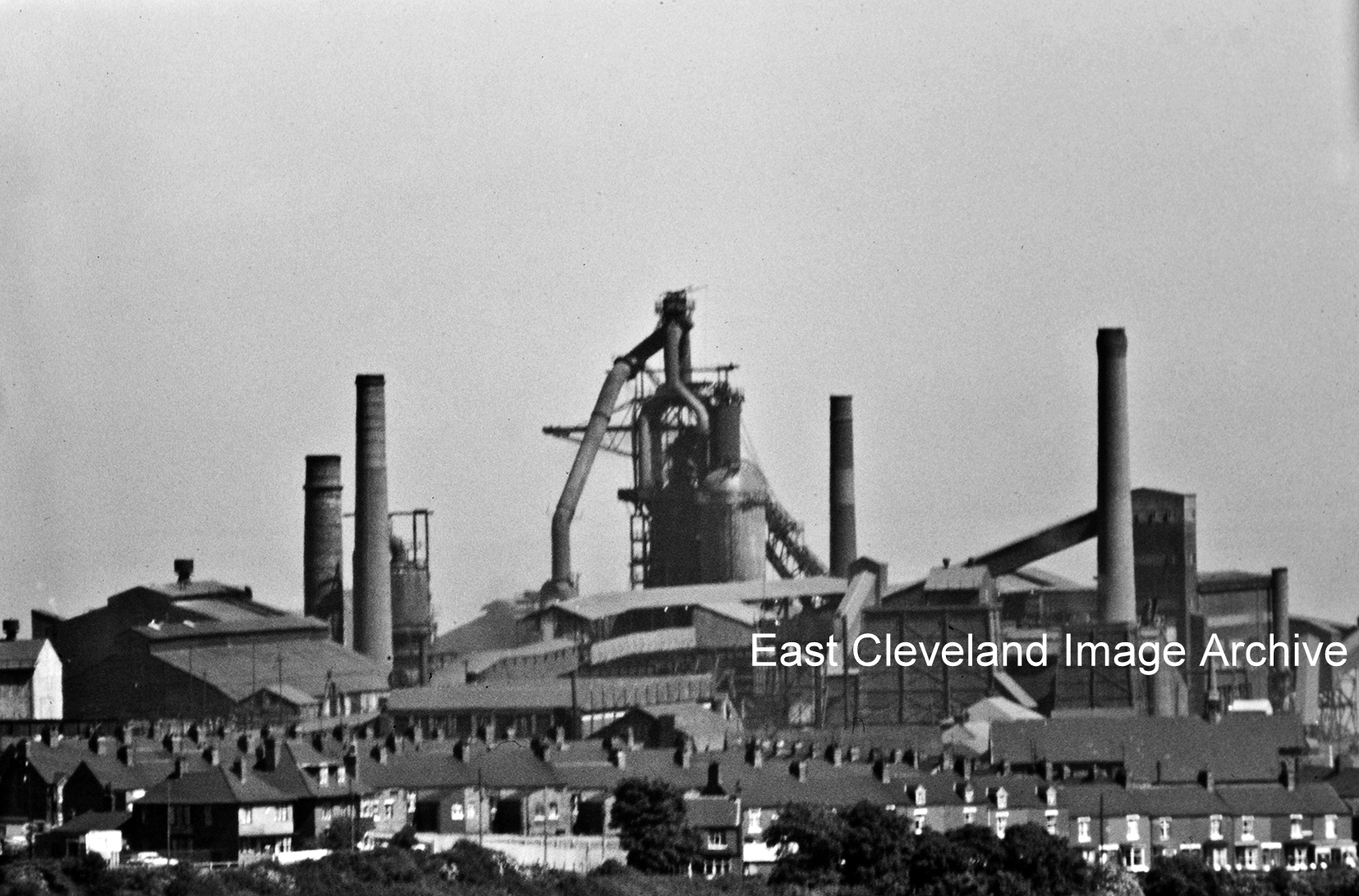
A good image of Skinningrove Iron Company; No. 5 blast furnace in the middle with the sinter plant to the right.
Image courtesy of Raymond Brown.
|
|
||
 A good image of Skinningrove Iron Company; No. 5 blast furnace in the middle with the sinter plant to the right. 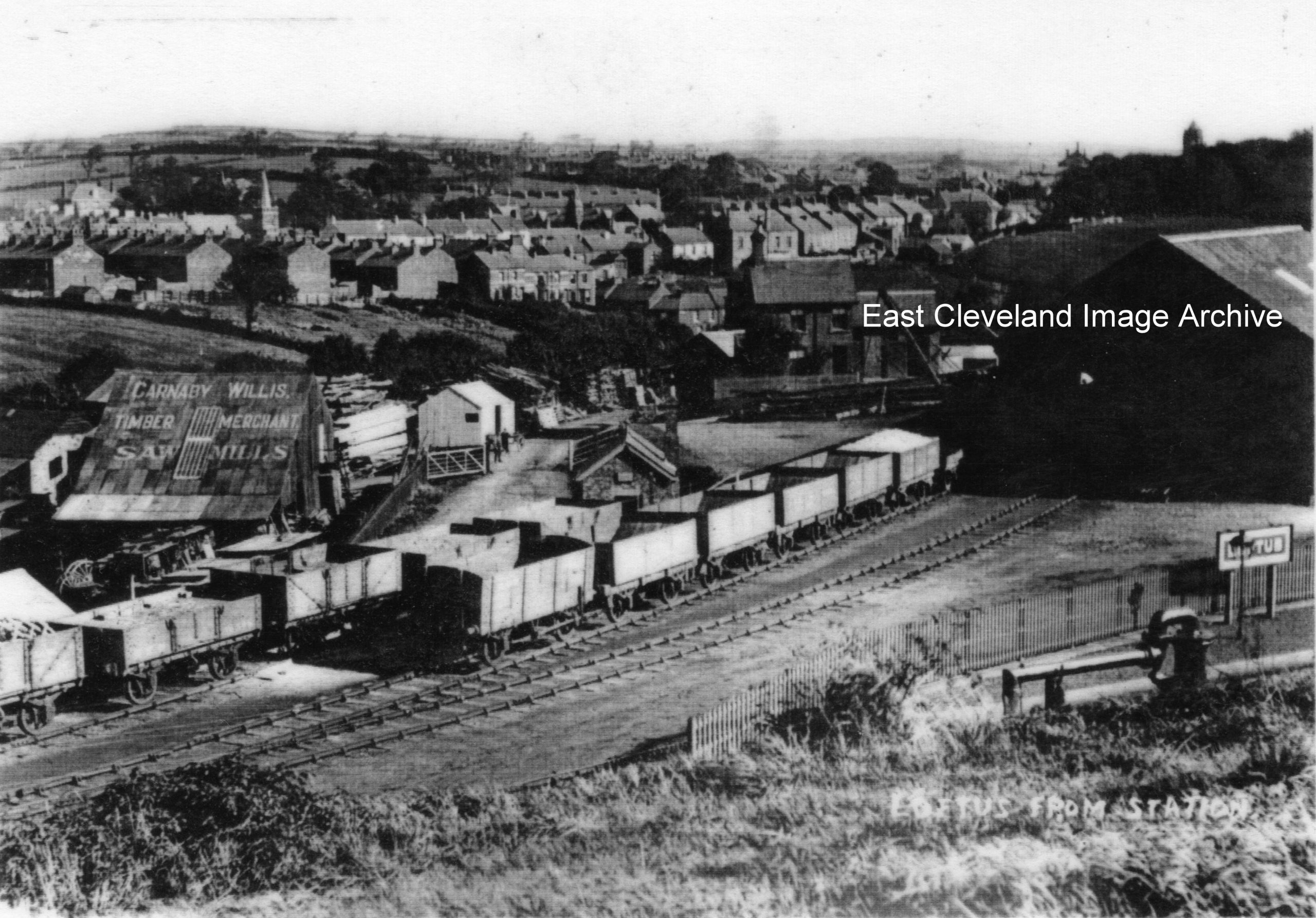 This view of Loftus station site includes the Carnaby Willis Timber Merchants Saw Mill (Carnaby Willis as well as becoming a Loftus Councillor was a local benefactor in later years). The shed roof featured carried the caption heading to this image for many years. Image courtesy of the Pem Holliday Collection, the David Linton Collection and others, thanks to Derick Pearson for the update. 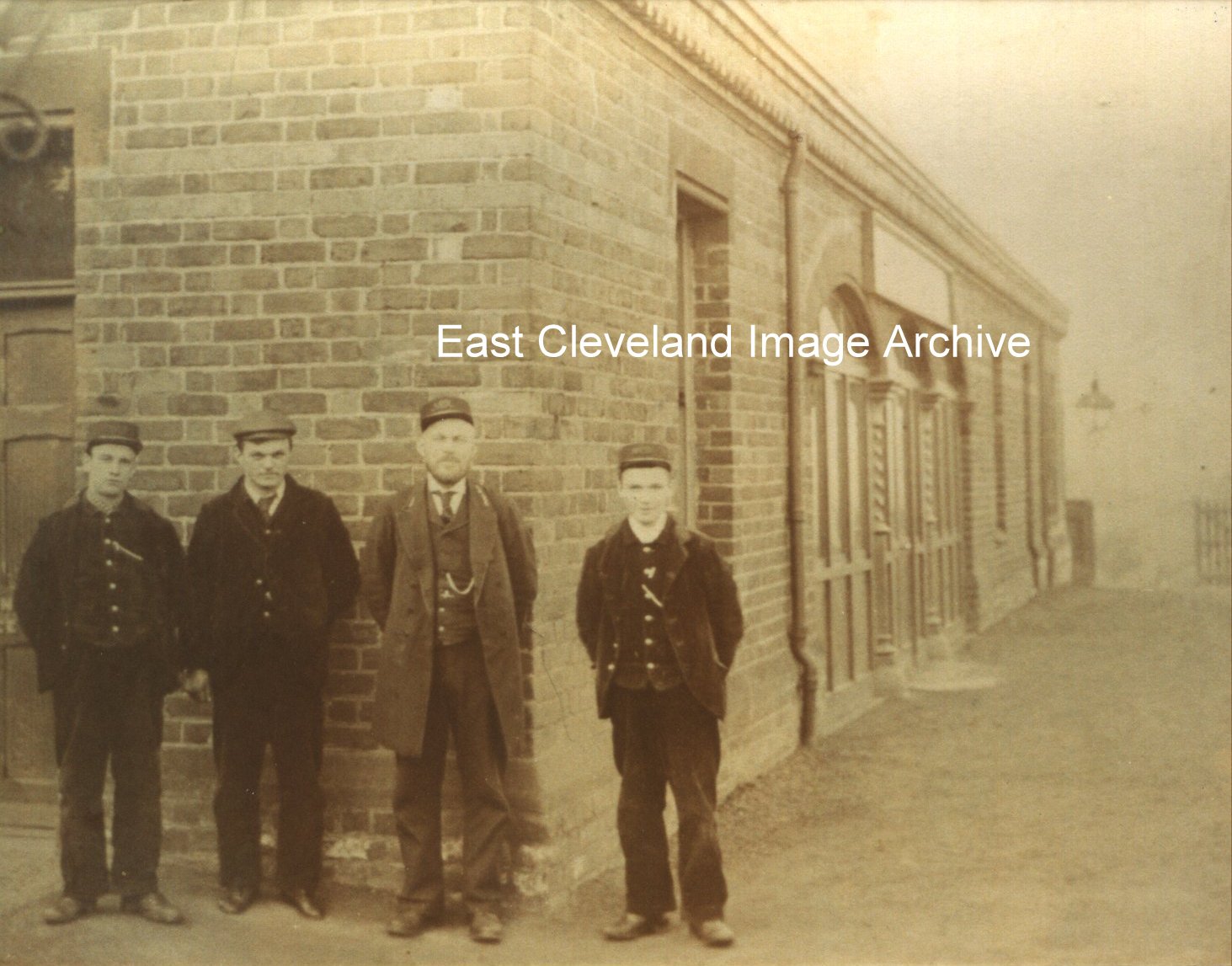 The stationmaster and his porters line up to get their picture taken on Carlin How Station (the name wasn’t changed to Skinningrove until 1903). Does anybody know who they are? Image courtesy of Carlin How Community Centre. 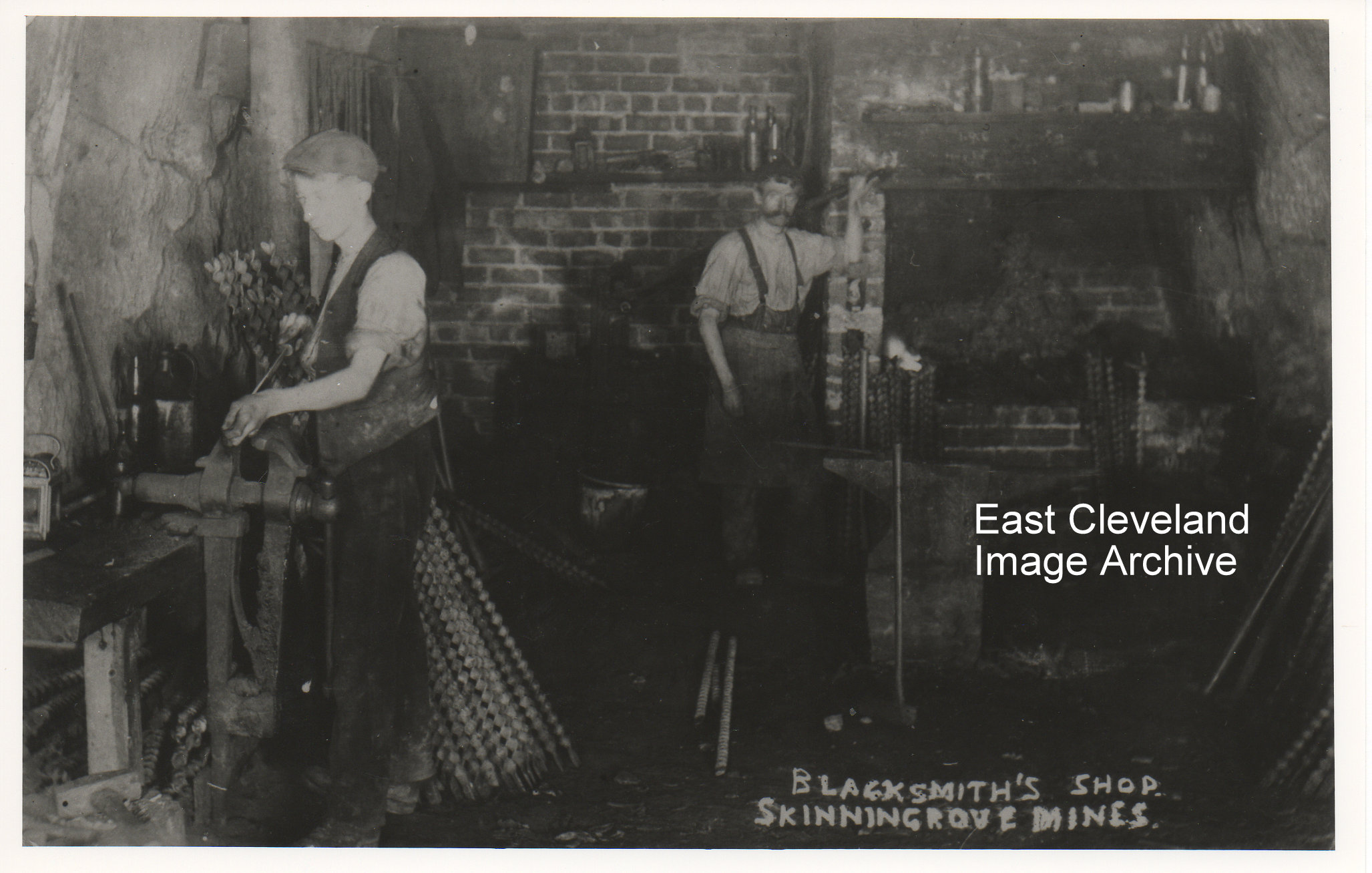 We can see two men hard at work in the blacksmith’s shop at Loftus mine. The man with the file in the foreground is probably the blacksmith and his helper behind with his hand on the chimney damper for the fire. Image courtesy of Olive Bennett, the David Linton and Pem Holliday Collections. 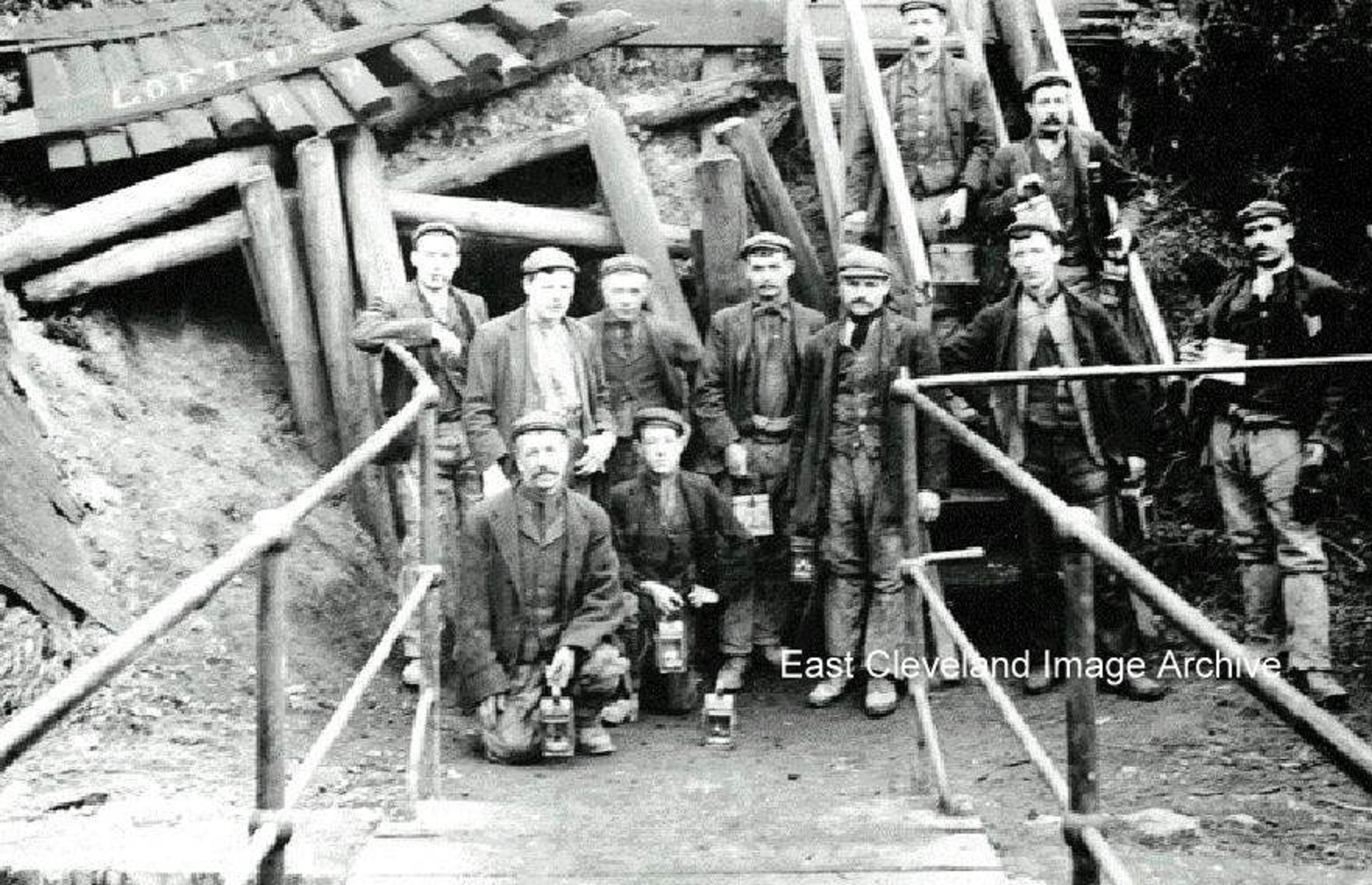 Another group of Loftus miners prepare to go in-bye. The photographer must have had a busy day! Can anybody identify any of the miners? Image courtesy of the David Linton and Pem Holliday Collections. 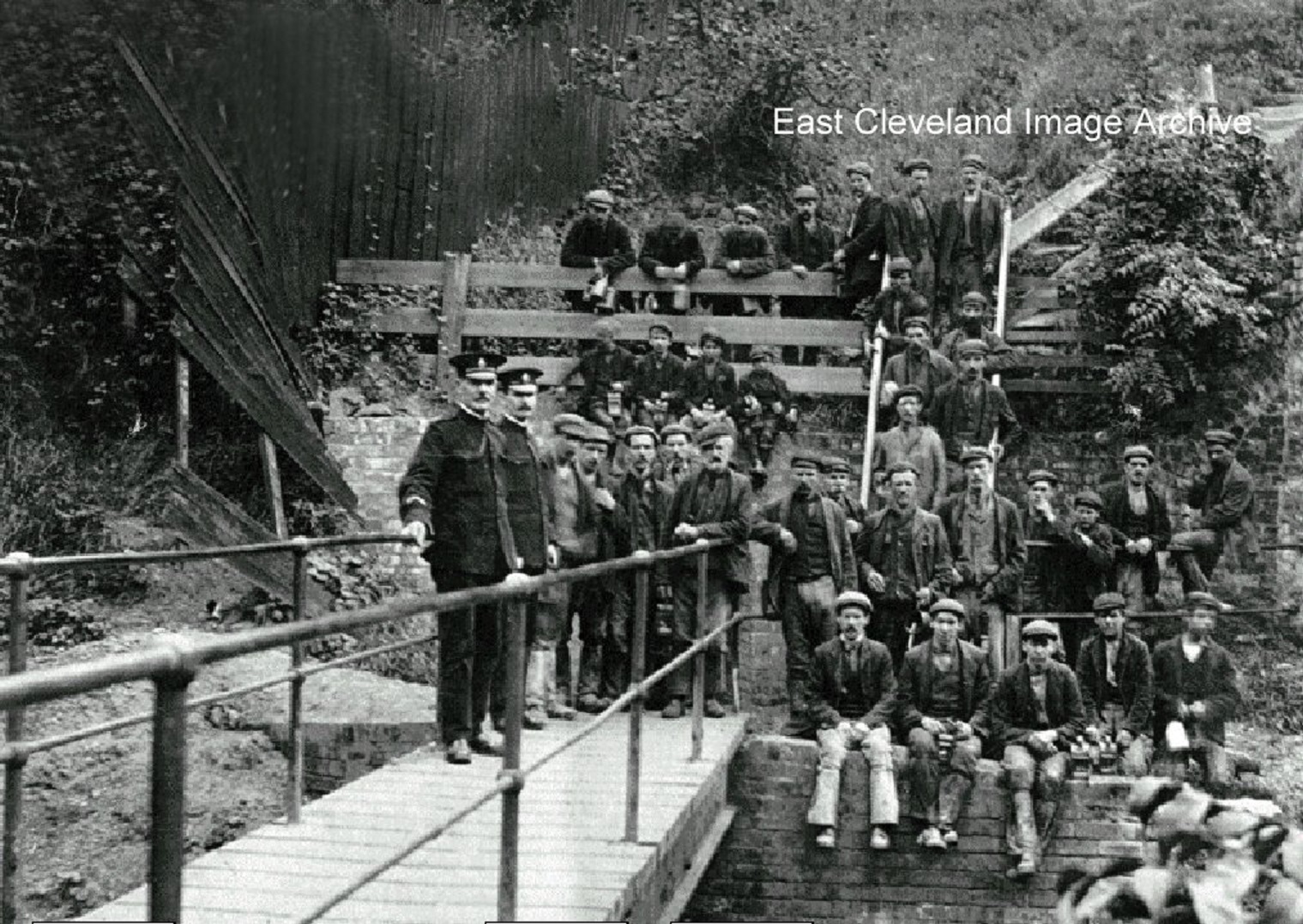 This is a similar shot to the other image of the Loftus Drift, but taken from farther back. Why the two police officers were present we didn’t know. Sheila Harris suggested: “My guess is that this is a strike. It is unlikely that so many men would be free to pose in any other circumstances. The police would be there to protect the owner’s interests.” However, David Richardson advises: “Outside what was the original main drift into Loftus mine which later became a traveling way when the North drift was opened further up the valley. There are 34 Mine Workers and 2 policemen visible in the photograph and while it is unusual that the police men are with them (maybe because of a strike as has been already mentioned) I have seen at least six different group photographs taken outside this drift so it wasn’t to uncommon an occurrence. In one of these other photographs the group totalled 41.” Perhaps their comments, are the definitive reason for the police being present. Image courtesy of the David Linton and Pem Holliday Collections, thanks also to Sheila Harris and David Richardson for their updates. 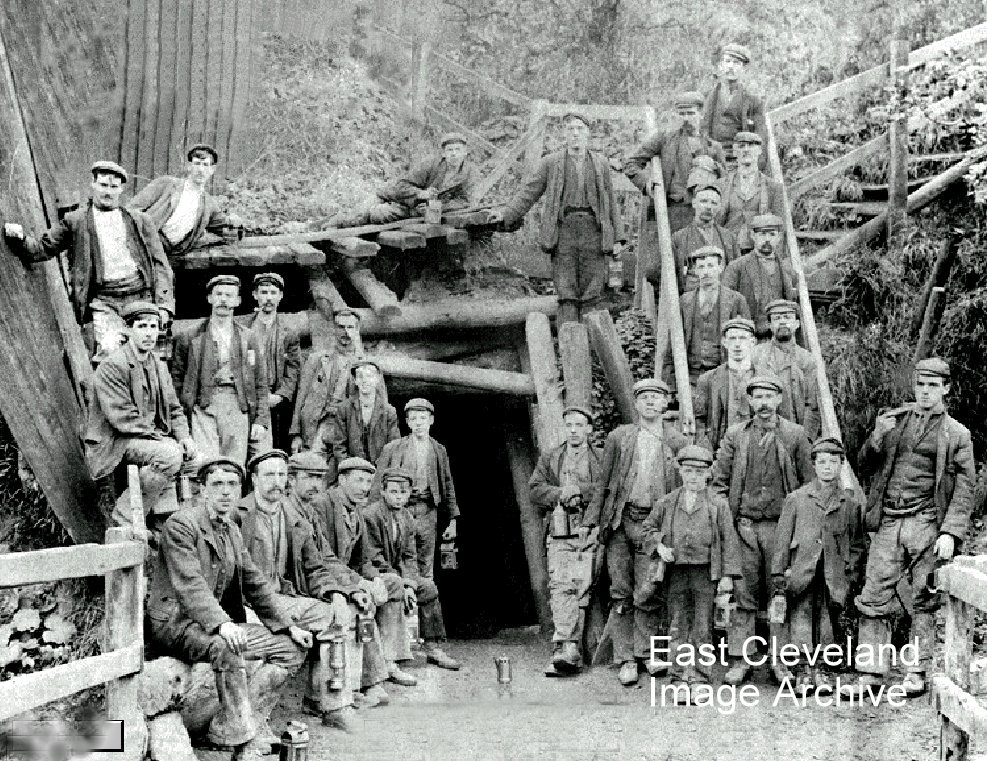 There’s an almost surreal look to this image – I’m having a job deciding whether it’s the real thing or an elaborate photographic studio set piece! This must be the travelling drift, because there’s no sign of any rails for tubs to run on. It looks like a full shift, right down to the trapper lads. It can’t be too early on because there are Davey Safety Lamps in view, although no safety helmets. Shot Cannisters are in evidence, but no picks. Can anyone name any of these men? Image courtesy of Cleveland Ironstone Mining Museum. 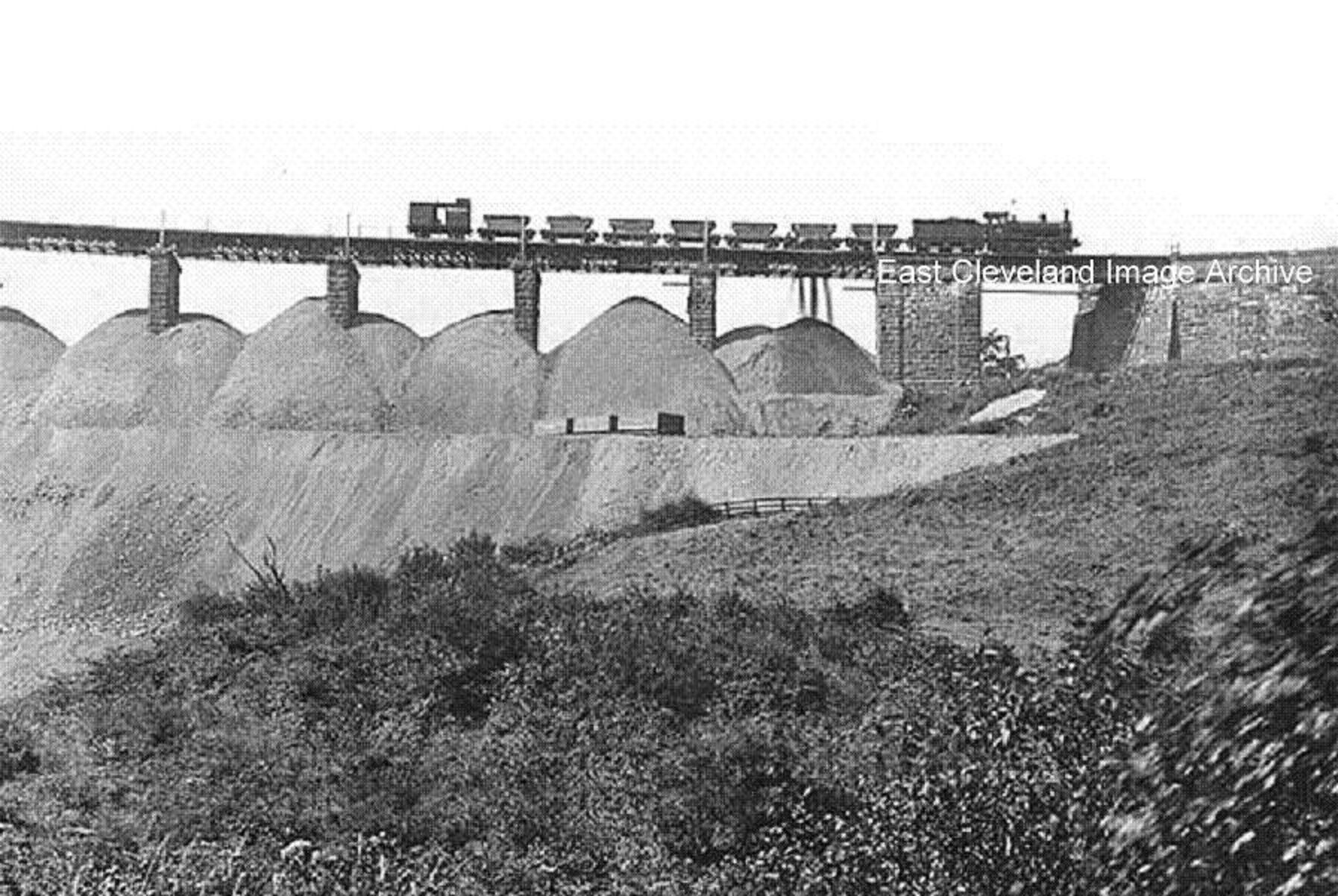 Doesn’t look real does it? The train going over Loftus viaduct is dumping shale from the mines to convert the viaduct into an embankment. The viaduct was seriously weakened by undermining from the ironstone mines, so these drastic measures were taken to fix the problem. Simon Chapman tells us: ”Messrs Bell Brothers wanted to mine ironstone from beneath the viaduct from their Carlin How Mine so arrangements were made to fill in the viaduct to support it from 1907. In January 1911 it was found that one of the piers had begun to crack because of unequal infilling so rail services were suspended for a fortnight to enable extra tipping to take place. Shale was tipped from Liverton and Loftus Mines and was completed by 1914.” Image courtesy of the Pem Holliday Collection and thanks to Simon Chapman for that update. 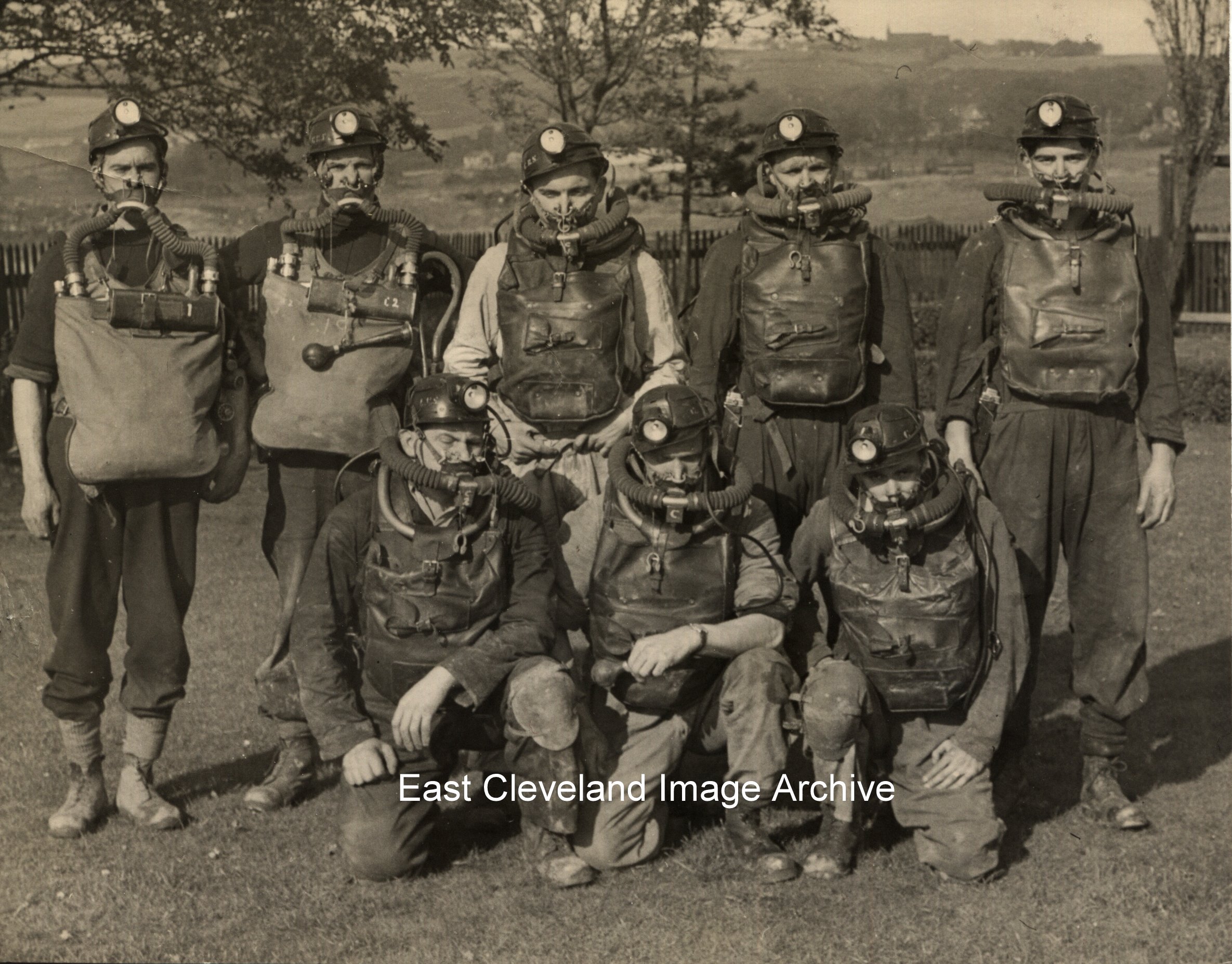 Not from outer space but from underground, we did not really know anything about this photo other than what was written on it: ”Crook rescue Team, Kilton Pit men. Dennis Pearson 1st Back”. Taken from the ’Evening Gazette’ Monday 3 May 1954: “Fourteen taken to hospital”. ‘Rescuers overcome in bid to save others. One Dead, 31 Gassed in Cleveland Mine’ One man was killed and 31 others were overcome by gas following an explosion at Kilton Ironstone mine, near Brotton today. The dead man was, Raymond Johnson age 40, loader man of 34 Gladstone Street, Loftus, whose body was brought to the surface about five hours after the explosion took place. Of the 31 overcome by gas were several of the rescue men; fourteen men were taken to hospitals in Redcar, Brotton and Guisborough, and the others treated on the spot. Helping the local mine rescue team were teams from Crook (two) Houghton le Spring and Benwell Tower, near Newcastle. Ambulances were sent from Redcar and Carlin Howe ‘Fire brigades help’ Middlesbrough Fire brigade and neighbouring fire authorities were asked to send resuscitation apparatus to the mine. It is believed that the explosion which displaced arches and roof supports occurred just before a three-man loader team started operations. The force of the blast blew Stanley Burton age 38 of 34 St Helens Walk, Liverton Mines and Iwan Dumoncie age 29 of 28 Tyne Street, East Loftus off their feet and threw them some distance. Burton suffering from cuts and abrasions was taken to the Guisborough Admiral Hospital, but the other man was allowed to go home.” It is worth visiting the Durham Mining Museum Site to read the full Mines Inspectors Report on this incident. Derick Pearson explained: ”This photograph was taken to show those associated with the clipping underneath it, and also because it was one of the rescue groups which covered many of the pits throughout the area including the coalfields. My father (Deputy) Dennis Pearson is first left standing on the back row. Next to him is Bob walker who lived at North Skelton at that time. The rest of the team I am certain were from different pits and on this occasion there were teams from 3 other pits. When I say team I mean 2 men teams in this instance. There were teams from Crook, Houghton le Springs and Benwell as well as others to drop back on in the event of a multiple disaster. The reason it was called Crook rescue team was because the rescue teams involved all travelled and practised their rescue methods at the mine at Crook. As my Father and Bob were from Kilton Pit the photo always got called “The Crook Rescue Team” by the local lads, hence the name on the back of it. Andrew Turnbull the Mine manager at Kilton Mine used to take my Father and Bob up to Crook in his vehicle, a Vauxhall Wyvern or Velox at that time. The Gas explosion rescue mentioned above was already in force before the rescue teams from the outlying Durham pits arrived and men like Rob Johnson and Bill Garbutt acted fearlessly trying to get their own mates out before the other teams came. The man who was killed was Raymond Johnson and was nicknamed ‘Chock Johnson’.” Many thanks to Derick for that explanation. Alan Featonby adds: ” I was at school with Andrew Turnbull’s son during the early 1960’s. At that time his father drove a Vauxhall Cresta ‘E’. It had the sun visor option and two tone paint, Gold and blue. Very stylish! My father had a 1955 Vauxhall Wyvern in gold, hence my recognition.” Image courtesy of Carlin How Community Centre and from a collection compiled by Derick Pearson in 1983, additional information courtesy of Eric Johnson.
Pictured we have two of the ironstone miners undertaking a record-breaking venture of removing ironstone in a one week period: on the left is Dennis Pearson, with on the right George (Ducks) Hollingworth at Kilton B . This photograph was taken for the record breaking venture that took place in Kilton Pit in the early 1950s. One week of absolute dedication; to drill, shot fire, fill tubs and lead the stone. |
||
Recent Comments